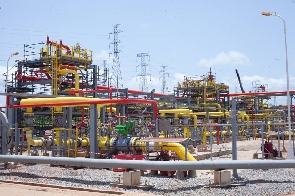Natural gas prices plunged to new lows this week, falling below $1.50/MMBtu, a catastrophically low price for U.S. gas drillers.
The factors afflicting the gas market are multiple. Prices had already fallen below $2/MMBtu at the start of 2020, weighed down by oversupply. But it wasn’t a problem confined to the U.S. There was also a global glut of LNG due to a wave of capacity additions in 2019.
That was the situation heading into 2020. But just as the COVID-19 pandemic tore apart the oil market, natural gas also went into a tailspin. Global gas demand is expected to fall by 4 percent this year, “largest recorded demand shock” in history, according to the International Energy Agency.
Buyers of U.S. LNG are now cancelling shipments at a rapid clip. U.S. LNG exports have declined by more than half compared to pre-pandemic levels.
“There would have been too much LNG in the world even without Covid-19,” Ben Chu, a director at Wood Mackenzie’s Genscape service, said in a statement. “COVID-19 has made it worse.”
Buyers abroad are willing to pay a cancellation fee instead of receiving shipment from U.S. exporters, a sign of how badly the market has deteriorated. For August delivery, between 40 and 45 cargoes have been cancelled, nearly double the rate of cancellation in June.
Typically, cheaper gas can stimulate demand, particularly in the electric power sector. But that outlet is not as large as it may have been in the past, not least because gas has already been cheap for quite some time. Thus, the coal-to-gas option is limited. Without an export route, and without larger uptake from utilities, the gas glut has deepened.
“As a result, we see US gas production shut-ins, which we had been discussing as a risk, as now part of our base case for this summer,” Goldman Sachs warned in its report. The bank sees roughly 2 Bcf/d of shut in gas supply for about two months in order to head off storage congestion.
The shut-in process can be thought of as “the last shoe to drop in a global gas rebalancing process,” Goldman added. The logic goes something like this: the LNG market was oversupplied, Asian LNG prices fell, more LNG was routed to Europe, that pushed European gas prices down, which then led to the closure of the economic window for sending American gas abroad.
Worse, for American shale gas drillers, backed up LNG cargoes will exacerbate the glut within the United States. By the end of the summer, the volume of cancelled gas could add more than 760 billion cubic feet of gas to storage, according to Goldman Sachs.
As a result, Goldman Sachs slashed its pricing forecast for natural gas prices to $1.40/MMBtu for October, down from $1.75/MMBtu previously. However, the investment bank reiterated the tightening of the market in 2021, in large part because of this year’s supply declines.
Goldman stuck with its price forecast of $3.25/MMBtu for next summer, and U.S. LNG exports are also expected to rebound as the market gradually tightens.
Looking forward, the business case for U.S. LNG may not suffer permanent scars. The U.S. tends to shoulder the worst of the rebalancing burden, as contract terms are the most flexible. When the market sours, like it has, U.S. LNG bears the brunt of the cancellations.
But that flexibility can be sold as an advantage to would-be buyers, Wood Mackenzie says, reducing their risk. That works in favor of potential U.S. LNG projects.
Still, others say the outlook is more negative, even in the medium-term. The pandemic, weaker demand and the shock to capital budgets make it unlikely that any additional North American LNG project goes forward in the next five years, according to S&P Global Platts Analytics.
Either way, upstream, there is little sign that the shale gas industry can turn things around. The industry succeeded in dramatically ratcheting up supply over the past decade, “[y]et in financial terms, the gas production boom has been an unmitigated financial bust,” according to a new report from the Institute for Energy Economics and Financial Analysis (IEEFA).
Many companies weren’t earning positive cash flow even when prices were higher. But gas priced below $1.50/MMBtu is a disaster.
Click to view details



Business News of Tuesday, 30 June 2020
Source: oilprice.com







![Deputy Minority Leader, Emmanuel Armah-Kofi Buah [L] and First Lady Rebecca Akufo-Addo Deputy Minority Leader, Emmanuel Armah-Kofi Buah [L] and First Lady Rebecca Akufo-Addo](https://cdn.ghanaweb.com/imagelib/pics/114/11465182.295.jpg)









